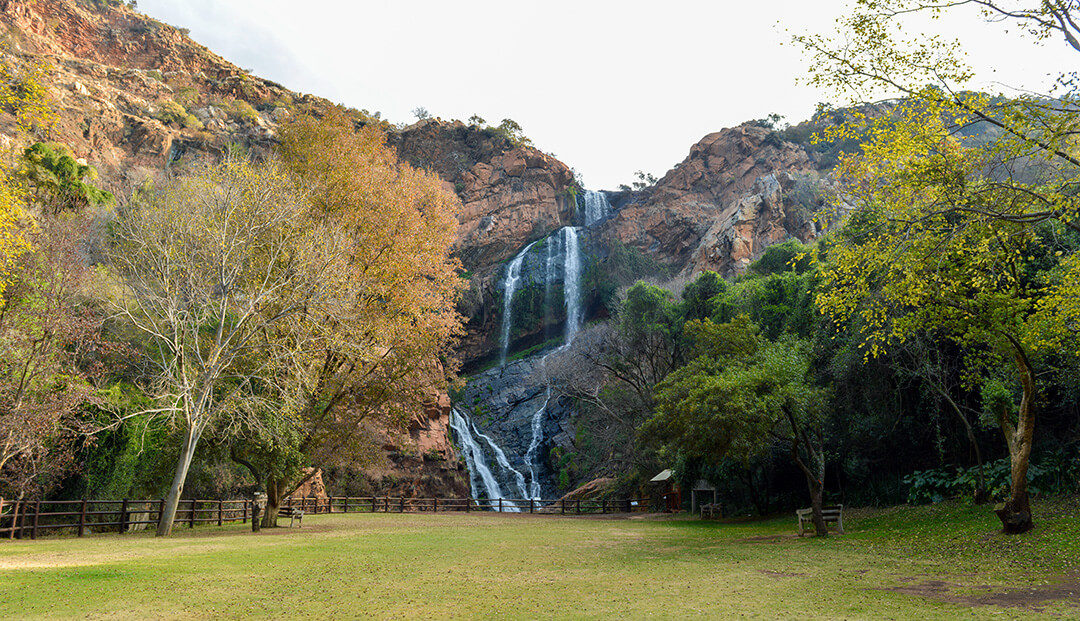In honour of the late freedom fighter and political activist, Walter Sisulu, last week saw the unveiling of the brand new Sisulu Circle at the Walter Sisulu National Botanical Gardens in Roodepoort, Gauteng.
Along with a new statue, which denotes key dates in Sisulu’s life and journey, a rare and precious orchid species found within the garden, has been renamed after Sisulu’s wife, Albertina.
Almost nearing extinction, the Mama Sisulu Orchid will be conserved and protected within the botanical gardens.
History of the Walter Sisulu National Botanical Garden
The Walter Sisulu National Botanical Garden in Roodepoort Gauteng forms part of the nine National Botanical Gardens that is managed by the South African National Biodiversity Institute (SANBI).
The establishment of the garden started in July 1982 when the then Roodepoort and Krugersdorp City Councils donated portions of the land to the institute.
Initially known as the Transvaal National Botanical Garden, the garden was opened to the public in 1987 as the Witwatersrand National Botanical Garden.
It was later renamed to the Walter Sisulu National Botanical Garden in March 2004 in honour of the late ANC freedom fighter Walter Sisulu (1912 – 2003), a significant leader in the struggle for a democratic South Africa.
Natural Vegetation and Wildlife in the Garden
Located in an area known as the “Rocky Highveld Grassland”, the garden is set against the magnificent backdrop of the Witpoortjie waterfall which invites an abundance of wildlife into the garden.
Extended over 300 hectares, the area consists of many habitats from grassland to savanna, bushveld, streams and woodlands, including a succulent rockery garden, cycad garden, medicinal garden, water garden, fern trail, wildflower area, geological garden, arboretum, a water-wise garden as well as a bird and butterfly garden.
With over 600 plant species, the vast biodiversity attracts a various range of lifeforms, with over 220 bird species recorded on site, as well as a number of reptiles, small mammals such as antelope and jackals, South African hedgehog, cape porcupine, butterflies, frogs and rock hyrax (dassies) and plenty of insects.
The abundance of birdlife creates much of the atmosphere in the area with their chirping and constant activity. The Walter Sisulu National Botanical Garden has especially adopted a policy of creating natural “bird zones” which provide safe-havens for birds and other animals to find food and build nesting sites without human interference. The garden is also home to a well-known pair of Verreaux’s Eagles that nest in the cliffs alongside the waterfall.
The change in the seasons will determine which animals can likely be seen, as some species are migrants and are not always visible during the day.
Things To Do in the Walter Sisulu National Botanical Garden
In Spring (October and November) a host of migrant bird species return to the garden to build their nests and prepare for the summer breeding season. As the local wildflowers start to emerge, the Garden becomes an oasis for wildlife and natural beauty.
During this time of the year, a stroll along one of the many wonderful walks in the garden or on the trail alongside the waterfall is an absolute treat.
One can also arrange a guided tour along the Roodekrans Ridge and through the Nature Reserve part of the garden. This will give visitors an opportunity to learn about the natural cycles of life and biodiversity within the garden.
Finally, the garden offers plenty of shaded lawn thanks to the many century old trees. Visitors can spend the day under with bring-along picnic baskets and blankets.
There is also a nursery, gift shop and restaurant within the garden area, and during summer the grounds allow for wonderful summer sundowner concerts.
Walter Sisulu National Botanical Garden Open Hours and Fees
The Walter Sisulu National Botanical Gardens are open Monday to Sunday from 08h00 – 17h00.
Entrance fees for the garden are:
- Adults: R 50,00
- Scholars: R 15,00
- Students: R 30,00 (must present a valid student card)
- Children under 6 years: Free
- Pensioners: Free entrance on Tuesdays

